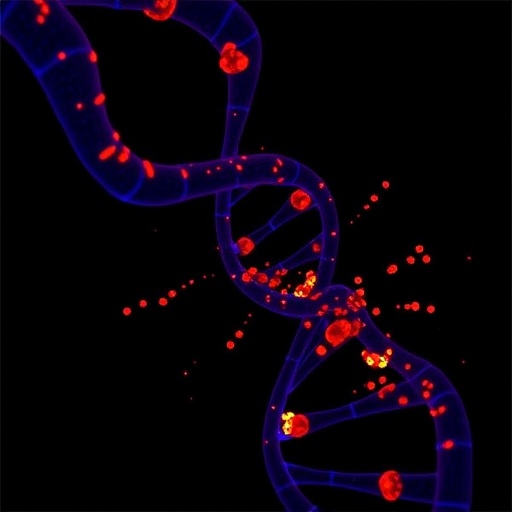In a groundbreaking exploration, the landscape of pediatric radiology is being reshaped by a collaborative approach, particularly focused on the contributions and roles of women in this specialized field. The discussion, spearheaded by Ayyala, Schiess, and Tanimoto, underscores a vital transition from a competitive mindset towards a more synergistic framework. This shift not only highlights the importance of collaboration among professionals but also seeks to redefine existing narratives that may have constrained women’s involvement and recognition in pediatric radiology.
Women have traditionally been underrepresented in medical specialties, including pediatric radiology, often facing unique challenges that discourage their full participation. The authors emphasize the significance of recognizing and valifying women’s contributions within this domain. By fostering partnerships and collaborative initiatives, the field can better leverage diverse perspectives and expertise, ultimately enhancing patient care and advancing the discipline.
As pediatric radiology continues to evolve, collaboration emerges as a powerful tool not only for professional development but for breaking down barriers that have historically hindered women’s progress. The authors advocate for a change in rhetoric, suggesting that focusing on collaborative achievements rather than competitive accolades can transform the professional culture. This collective approach encourages mentorship and support among peers, ensuring that women in pediatric radiology are not only acknowledged but celebrated for their contributions.
The challenges faced by women in medicine, particularly in leadership positions, are multifaceted and deeply rooted. Historical biases, societal expectations, and structural barriers have perpetuated a culture where competition is often prioritized over collaboration. The authors delve into these systemic issues, drawing attention to the need for institutional changes that support an inclusive environment in pediatric radiology. By addressing these challenges head-on, organizations can create frameworks where women can thrive and be recognized for their advancements in the field.
An essential aspect of this reframing involves increasing visibility. By spotlighting the stories and achievements of women in pediatric radiology, the authors aim to inspire upcoming generations of medical professionals. Increased representation in academic literature, conferences, and leadership roles can diminish existing stereotypes and encourage a more balanced and equitable environment. Visibility fosters connectivity and opens doors for collaboration among peers, which in turn amplifies the collective impact of women in this field.
Moreover, the integration of technology and innovation has paved the way for new collaborative models in pediatric radiology. Modern tools and platforms enable seamless communication and information sharing among professionals across the globe. This technological advancement transforms how practitioners engage with one another, facilitating collaboration that transcends geographical boundaries. The authors note the potential of telemedicine and digital platforms to unite professionals who can share best practices, innovations, and insights to tackle complex pediatric cases collaboratively.
In conclusion, the article strongly argues that the transition from competition to collaboration is not merely a suggestion but a necessary evolution for the field of pediatric radiology. Emphasizing community and shared success can create a more inclusive atmosphere that empowers women and promotes diversity. This shift is not only crucial for the advancement of women in this medical specialty but stands as a model for other fields within medicine to embrace.
As we look ahead, the framework for collaboration suggested by Ayyala, Schiess, and Tanimoto provides a blueprint for an enriched future in pediatric radiology. By building a foundation where collaboration is the norm, we can expect enhanced educational opportunities, increased retention of female practitioners, and improved outcomes for patients—all critical elements that will define the future landscape of pediatric healthcare.
In achieving this vision, it is imperative for medical institutions and organizations to commit to implementing tangible policies that promote equality and collaboration. Encouraging women to actively participate in research, leadership training, and collaborative projects is essential for crafting a future where they not only participate but excel in pediatric radiology.
In summary, the evolution of pediatric radiology toward collaboration serves as a profound reminder of the power of unity in a profession routinely shaped by competition. Through this reframed narrative, a stronger, more equitable healthcare system is within reach—a system that celebrates diversity and leverages each individual’s strengths, ultimately benefiting both practitioners and patients alike.
Subject of Research: The evolving role and recognition of women in pediatric radiology through collaborative initiatives.
Article Title: From competition to collaboration: reframing the narrative of women in pediatric radiology.
Article References:
Ayyala, R., Schiess, D., Tanimoto, A. et al. From competition to collaboration: reframing the narrative of women in pediatric radiology.
Pediatr Radiol (2025). https://doi.org/10.1007/s00247-025-06378-0
Image Credits: AI Generated
DOI: https://doi.org/10.1007/s00247-025-06378-0
Keywords: pediatric radiology, women in medicine, collaboration, competition, mentorship, representation, diversity in healthcare.
Tags: advancing women’s roles in radiologybreaking barriers in healthcarecollaboration in medical specialtiesenhancing patient care through teamworkfostering partnerships in healthcarementorship in pediatric radiologyredefining professional narrativessynergy over competition in medicinetransforming professional culture in radiologyunderrepresentation of women in medicinewomen in pediatric radiologywomen’s contributions to pediatric healthcare






